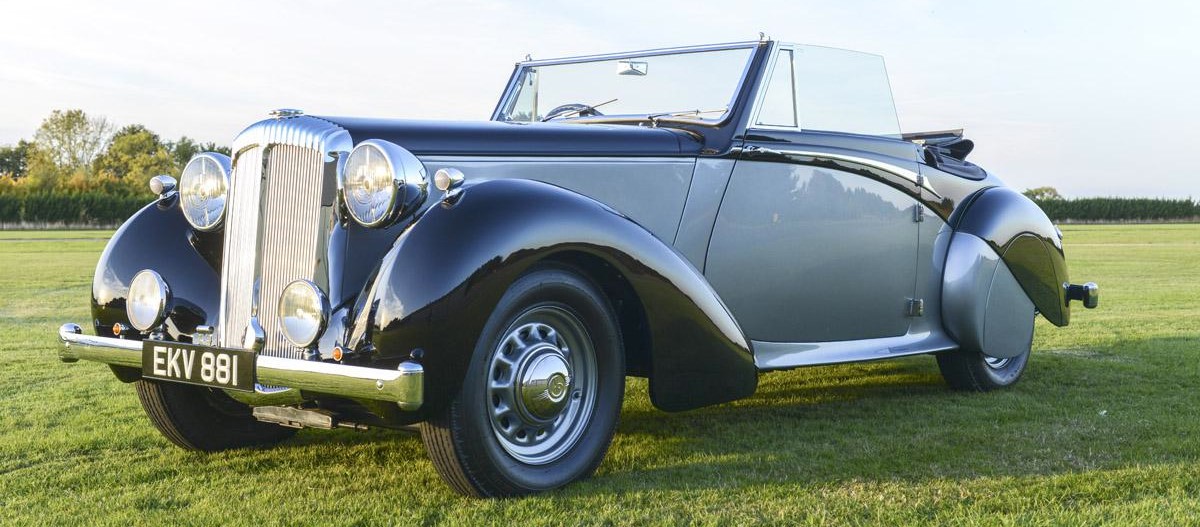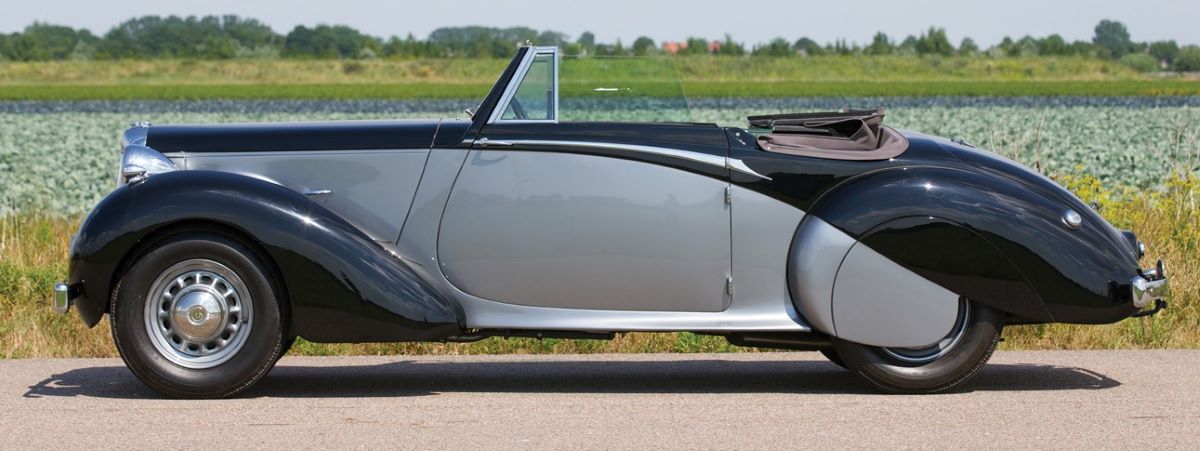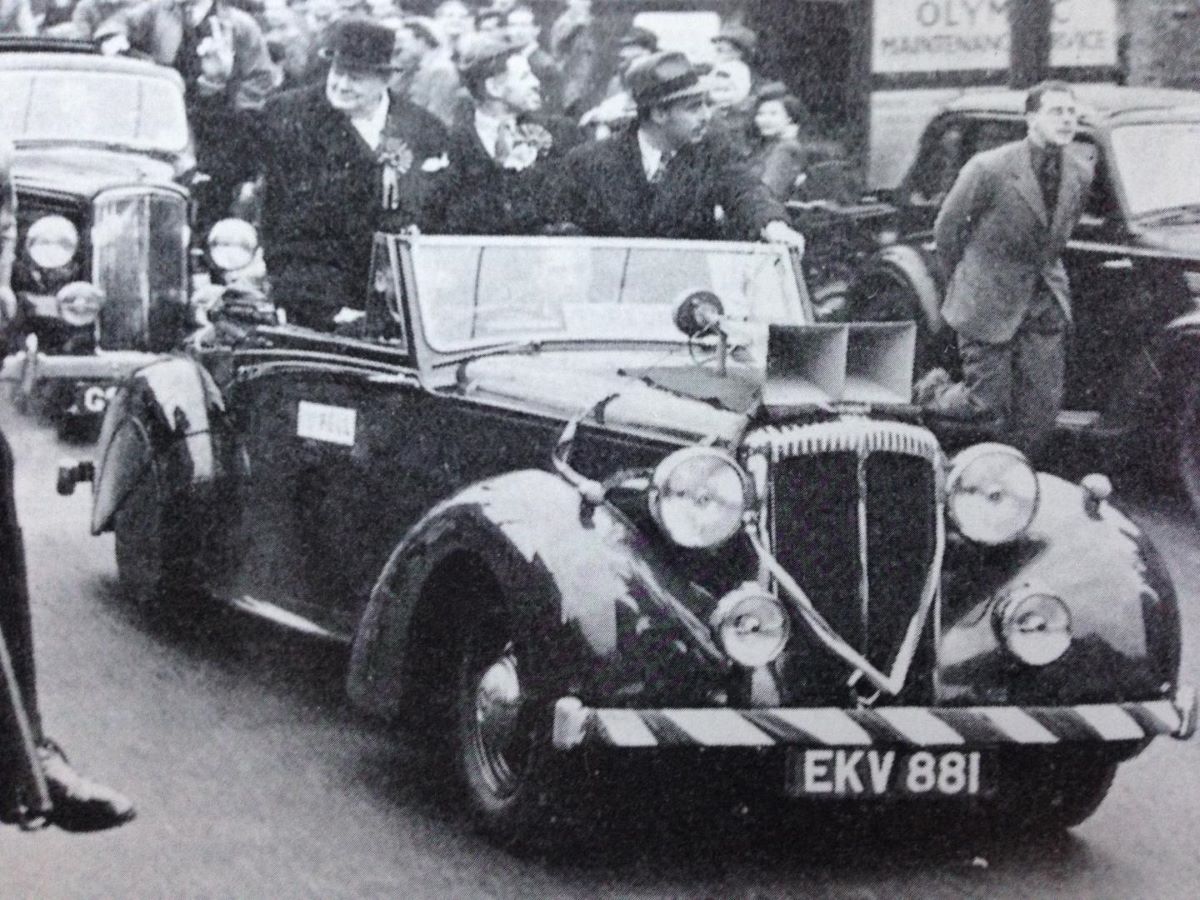
The production of the Daimler DB18 Drophead Coupés started in 1939, but was soon halted when war broke out. The factory was demolished during the Blitz of 1940 and only eight of the twenty three planned cars were built, five of those eight chassis were destroyed during the attack, leaving only three cars.
Chassis 49531 is one of those three cars, and the only surviving example. Daimler used it over a 10-year period from 1940 to 1950 for various special occasions and was notably loaned to Sir Winston Churchill to assist with his political campaigns in 1944 and 1949. The Daimler would be fitted with a load speaker system and Churchill would sit on the rear deck to address the crowds as he was driven through various cities.
The 1939 Daimler DB18 Drophead Coupé is an early version of the Daimler DB18, which was introduced just before the outbreak of World War II. The car is a prime example of British luxury automotive engineering from the late 1930s, known for its elegance, refinement, and advanced features for the time.

- Engine: The 1939 DB18 is equipped with a 2.5-liter inline-six engine, delivering around 70 horsepower. This engine was designed for smooth and quiet operation, aligning with Daimler’s reputation for producing luxury vehicles.
- Transmission: The car features a four-speed Wilson preselector gearbox, a semi-automatic transmission that was quite advanced for its time. This system allowed the driver to select the next gear in advance, making for a smoother and more effortless driving experience.
- Design: The Drophead Coupé variant is particularly notable for its convertible top, which can be folded down to allow for open-air driving. The car’s design reflects the pre-war luxury aesthetic, with a long bonnet, sweeping fenders, and a stately presence on the road.
- Coachwork: As with many luxury cars of the era, the DB18 was often bodied by various coachbuilders, resulting in unique designs. Notable coachbuilders included Barker and Tickford, who crafted elegant and bespoke bodies for these vehicles.
- Interior: The interior of the 1939 DB18 Drophead Coupé was opulent, featuring fine leather upholstery, wood trim, and a well-appointed dashboard. The cabin was designed to provide a comfortable and luxurious experience for both driver and passengers.

The Daimler DB18 Drophead Coupé is a classic British luxury car produced by Daimler between 1947 and 1953. It was an evolution of the pre-war Daimler DB18, which had been in production since 1939. The Drophead Coupé version, a convertible, is one of the more sought-after body styles due to its elegant design and rarity.
Key Features:
- Engine: The DB18 Drophead is powered by a 2.5-liter inline-six engine producing around 70 horsepower. This engine, though modest by today’s standards, provided adequate performance for the luxury cruiser.
- Transmission: It features a four-speed preselector gearbox, which was a characteristic of many Daimler vehicles of that era.
- Design: The Drophead Coupé variant is known for its sleek, flowing lines, and the roof can be folded down, allowing for open-air driving. The car’s design is distinctly post-war British, with elements of both luxury and practicality.
- Interior: Inside, the DB18 features a spacious cabin with high-quality materials, such as wood and leather, typical of luxury cars of the time. The dashboard is simple but elegant, with classic instrumentation.
- Coachwork: Many DB18s were bodied by various coachbuilders, including Barker, Hooper, and Tickford, adding to the uniqueness of each vehicle.
Historical Significance:
The Daimler DB18 Drophead Coupé was a symbol of luxury in post-war Britain, often associated with affluent owners and occasionally used for ceremonial purposes. Today, it is a prized collector’s item, appreciated for its classic design and historical significance. The 1939 Daimler DB18 Drophead Coupé was produced just before the onset of World War II, and production was limited due to the war. As a result, surviving examples from this year are quite rare and highly sought after by collectors. The car represents the pinnacle of pre-war British luxury automotive design and engineering.

You must be logged in to post a comment.